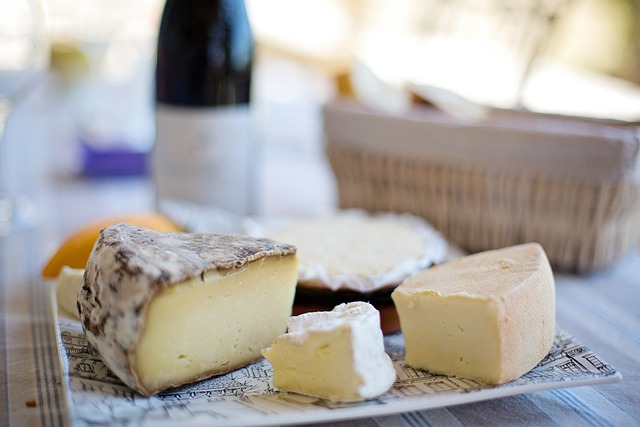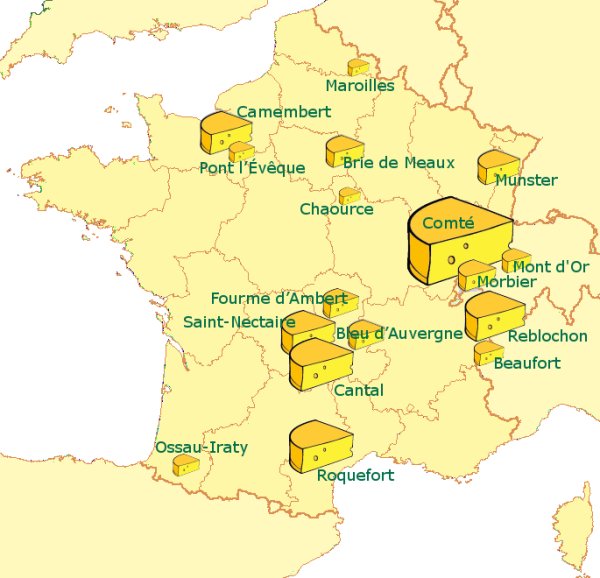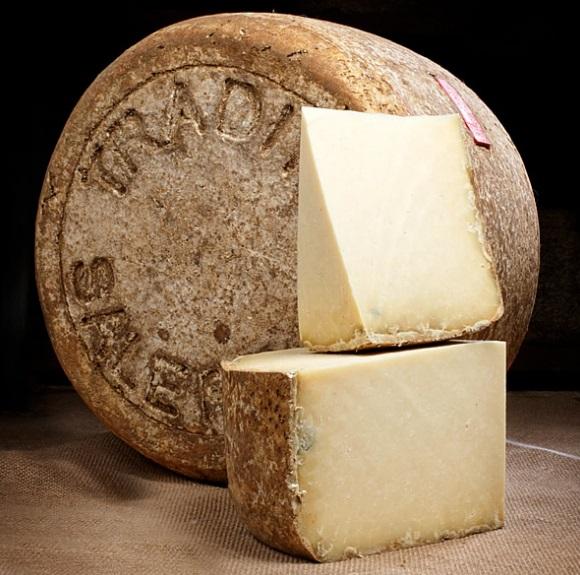 Home to Paris and the Eiffel Tower, France is also known for its cheeses. In global cheese markets, French fromage (cheese) is the standard.
Home to Paris and the Eiffel Tower, France is also known for its cheeses. In global cheese markets, French fromage (cheese) is the standard.
But lately, France’s cheese market has been struggling due to rising temperatures. What’s happening with this world-class product? Let’s find out...
What Cheese Means To the French
Cheese is a big part of French culture and identity. They love cheese so much that they produce at least 1,000 varieties.
According to one study, the French eat 57 lbs of cheese per person annually. That’s a lot of cheese! They eat cheese after the main dish and before dessert. It’s served in a special way that ensures everyone receives a piece of rind and can savor the different flavors throughout the cheese.
 Each region, or terroir, produces unique varieties which are categorized into seven groups: Fresh, Blue-Veined, Hard, Semi-Hard, Processed, Soft-Ripened, and Chevre. Milk from cows, sheep, goats, and occasionally buffalo are used as the main ingredient.
Each region, or terroir, produces unique varieties which are categorized into seven groups: Fresh, Blue-Veined, Hard, Semi-Hard, Processed, Soft-Ripened, and Chevre. Milk from cows, sheep, goats, and occasionally buffalo are used as the main ingredient.
A French food critic described the relationship between French people and their fromage in this way, “The history of French cheese is a love story between men, animals and the earth,”. As you can see, cheese is very important there and it’s tied to France’s deep, rich culture.
Fromage History
The first definitive trace of cheese is depicted in Ancient Egyptian wall art circa 2000 BC, but Europeans credit Rome with their introduction to it.
Throughout the 1,000 years that Rome ruled over Europe, an assortment of cheeses were introduced. Several recipes from those ancient times are still in use, but many were lost after Rome’s collapse.
Cheesemaking became an art form in French monasteries, preserving recipes for Munster, Gruyere, and Beaufort. During the 13th century, peasants began inventing regional cheeses. An economic revolution among French women was then sparked, with daughters inheriting skills and recipes (which they improved upon), from their mothers for many generations. Production continued to increase due to trade and advancements in the cheesemaking process.
The Ravages of Climate Change
 The Appellation d’Origine Protégée (AOP) is an organization that labels French cheese according to strict standards. To gain this label, French cheese makers must adhere to rules that specify the cattle breeds, types of feed, and the making and aging process.
The Appellation d’Origine Protégée (AOP) is an organization that labels French cheese according to strict standards. To gain this label, French cheese makers must adhere to rules that specify the cattle breeds, types of feed, and the making and aging process.
Extreme temperatures, drought, and wildfires have made it difficult for cheesemakers to follow these guidelines. For instance, Salers cheese requires that 75% of the cattle’s sustenance be locally grown grass. In the Auvergne region where Salers is made, grass for cows grows seasonally, and climate conditions are making it difficult to meet the 75% local feed threshold.
Farmers are figuring out ways to alleviate the strain of feeding their animals by growing crops like African sorghum. Others are downsizing their herds to preserve grass supplies.
Farmer’s Solutions
Farmers are finding innovative ways to use the higher temperatures to their advantage, using the warmer winters to grow feed crops that would normally grow in the summer.
Others are using the wet season to increase food stores by drying late-season crops indoors. Some farmers are demanding that the rules for AOP labeling be changed to reflect the shifting climate, the goal being to maintain their cheese product standards without compromising quality.
Change is on the horizon, but hopefully, these farmers will continue finding creative solutions to save the cheese!
Sources: NY Times, Washington Post, Der Spiegel, Guardian, Forbes, dairy-products-from-france.com







